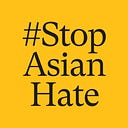Will Brands Go Beyond Lip Service on #StopAsianHate?
It’s time for brands to step up — or shut up
As anti-Asian hate crimes came to light across the United States in 2021, one of the brands that posted most loudly in support of Asians was Uber. Posts like “We condemn anti-Asian hate and violence” and “Asians have the right to move without fear” became common across Uber’s LinkedIn, Twitter, and Facebook feeds.
On March 23, Mohammad Anwar, a Pakistani Uber driver in Washington, D.C., was killed when two teenage girls carjacked his vehicle, shot him with a stun gun, and caused his car to crash.
On May 15, Uber driver Vince Kang was attacked by a mob in Morgantown, West Virginia, while waiting for passengers.
It’s safe to say that Uber’s social posts didn’t give criminals an epiphany that they shouldn’t attack Asians. It makes you wonder just how much of brands’ grandstanding on anti-Asian hate crimes actually makes a difference.
In my book Cultural Engineering, I wrote about the importance of brands walking the talk as they reengineer culture in a positive direction. I highlighted brands like REI, which took a stance for the environment in 2015 through #OptOutside and then lived up to it year after year by reengineering its business model to be environmentally friendly. And I contrasted that with brands like State Street Global Advisors, which rocked the creative awards circuit with its “Fearless Girl” statue while simultaneously paying women less than men in the same roles.
Viewed in that light, brands face a severe challenge to show that they are walking the talk when it comes to their support for Asians. In fact, I’ve yet to see one brand put forward a series of concrete steps to help Asians who are living in fear throughout the United States.
What is preventing them? I thought long and hard about it, and here is my conclusion.
The causes of anti-Asian hatred and violence are so deep-rooted that it’s not easy for brands to reach these roots and uproot the poisonous tree.
It goes to the essence of what it means to be a minority in the United States. American society is far more comfortable with minorities who are less successful than the majority. There’s more comfort with minorities who are underrepresented where power is held and decisions are made. To borrow a term from UX, it fits with many people’s mental models to label majorities with guilt and minorities with victimhood.
Asians make a mockery of these mental models. Asian Americans are seemingly an overrepresented minority in business, technology, and American society. Indian Americans have the highest per-capita income of all ethnicities in the United States, producing Microsoft CEO Satya Nadella, Google CEO Sundar Pichai, and Mastercard CEO Ajay Banga, among others. And then you have Chinese Americans, Vietnamese Americans, and many other kinds of East Asian Americans with stories of bootstrapping themselves out of poverty through education. Along with West African and Caribbean immigrants, Asian Americans have become disproportionately successful “communities of color” and a poster child for the American dream—the so-called model minority.
These developments have caused discomfort for a lot of people in the United States, who then take it out on Asians by simply attacking them. I don’t believe that this is simply a result of Covid-19, because there is evidence that anti-Asian violence was a serious issue in places like the San Francisco Bay Area long before the pandemic.
It’s not easy for a brand or company to simply erase the factors that cause this violence. It doesn’t make sense to tell Asians to be less successful so that there’s less jealousy toward them. It’s also not possible to reengineer the minds of jealous people who watch their own families remain in poverty as their Asian neighbors bootstrap their way out of it.
Taking concrete steps to address anti-Asian hate crimes also involves the uneasy realization that minority neighborhoods probably need more policing to keep minorities like Asians safe from attacks. This is a risky stance to take when the safer stance is to call for less policing in the aftermath of high-profile cases of police brutality against minorities. There’s a risk of painting yourself into a corner and suffering a cancellation attack from either the anti-police left or the pro-police right, depending on your stance.
Even brands, with their immense power to use their money and influence to catalyze positive changes in culture, are finding it a bit too hard to address these factors. At risk of overusing a cliche, it looks like brands have bitten off more than they can chew. So they resort to what’s easiest: lip service.
Here’s a thought: If you can’t walk the talk and engineer real changes on an issue, don’t talk about it. It just looks shallow. Nothing good can come out of lip service. Not for the brand. And not for the people the brand means to help.
It was very different with the Black Lives Matters-inspired changes of 2020. Apple launched a $100 million racial justice initiative. As part of this, it announced that it would increase its spending with Black-owned partners across its supply chain, increase its representation of Black-owned partners, and launch a camp for Black developers and entrepreneurs. Google announced a similar $175 million “economic opportunity package” for Black-led venture capital firms, startups, and small businesses. PepsiCo committed $400 million to racial justice initiatives such as grants for Black-owned businesses including restaurants.
In other words, brands found an ability to walk the talk when it came to Black issues. As such, they earned the right to talk about it. Unless brands can find similar ways to address Asian issues, it’s better for them to zip it.
Because if there’s one thing Confucian, Buddhist, and Hindu values have taught Asians, it’s that words are cheap and actions are everything.

